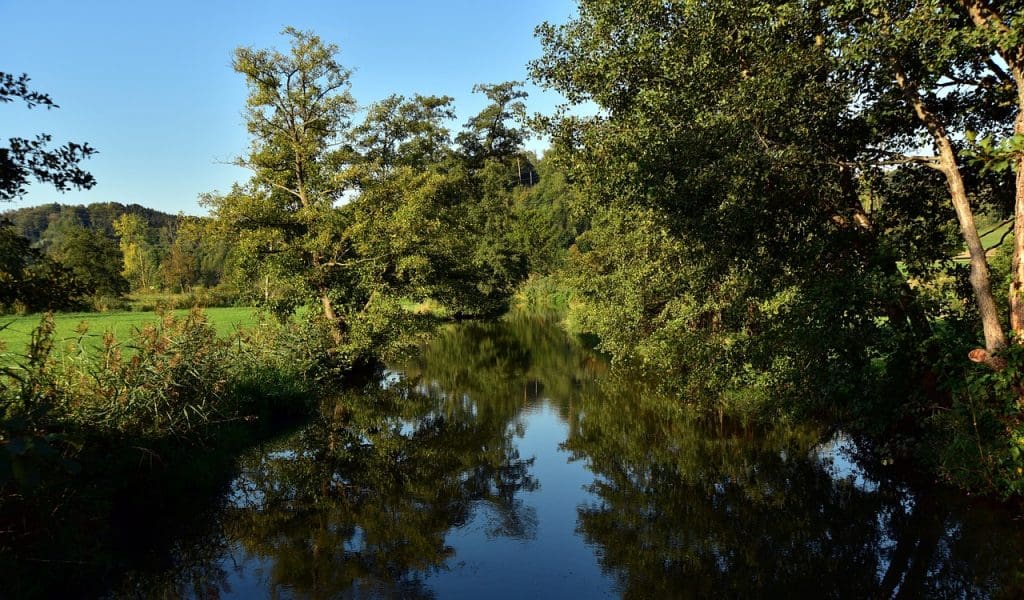In the informative article “Best Practices For Restoring Balance In Wetlands Infested With Alligator Weed,” you’ll discover effective strategies to tackle the menace of alligator weed in precious wetland environments. The piece guides you through practical steps, such as using integrated pest management, promoting native plant species, and collaborating with ecological experts. By adopting these best practices, you can help rejuvenate and maintain the delicate ecosystems that rely heavily on balanced biodiversity. Get ready to learn how your efforts can make a significant impact in restoring the natural harmony of wetlands overrun by this invasive species.
Best Practices For Restoring Balance In Wetlands Infested With Alligator Weed
Have you ever puzzled over the best way to restore balance in wetlands infested with alligator weed? If you have, you’re not alone. Alligator weed can be a stubborn invasive species, affecting the ecological balance and usability of wetland areas. But don’t worry, this article is here to guide you through best practices to help restore your precious wetlands.
Understanding Alligator Weed
What is Alligator Weed?
Alligator weed (Alternanthera philoxeroides) is a notorious invasive plant that can quickly take over wetlands, lakes, rivers, and even agricultural fields. Native to South America, it is now found in many parts of the world, predominantly in warmer climates. Its rapid growth and ability to outcompete native species make it a major concern for environmental management.
How Does It Affect Wetlands?
Alligator weed negatively impacts wetlands by disrupting the natural ecosystem. It forms dense mats that block sunlight, preventing the growth of native aquatic plants. This disruption can affect the local aquatic fauna, altering the food web and making the area less hospitable to birds, fish, and other wildlife. Additionally, it can exacerbate flooding conditions by blocking drainage channels and waterways.
Signs of Alligator Weed Infestation
You can identify alligator weed by its distinctive features: opposite leaves, white papery flowers, and hollow stems. It’s important to recognize these signs early on, as swift identification and response can be crucial for managing an infestation effectively.
Assessment and Planning
Conducting a Field Survey
The first step in dealing with alligator weed is to conduct a comprehensive field survey. Understanding the extent of the infestation will help you strategize your management efforts. You’ll want to map out the affected areas and note the density of the weed spread.
Key Points for Field Survey
| Aspect | Details |
|---|---|
| Location | Pinpoint the exact locations where alligator weed is growing. |
| Density | Note the density of the weed population in various parts of the wetland. |
| Native Species | Document the presence and condition of native plant and animal species. |
| Water Quality | Check for water quality parameters such as pH, oxygen levels, and pollutants that might affect both weeds and native species. |
Setting Goals and Objectives
What do you aim to achieve through your restoration efforts? Define clear goals and objectives, such as reducing alligator weed coverage by a certain percentage or restoring the population of a specific native species. Having clear targets will make it easier to measure the success of your efforts.
Develop a Comprehensive Management Plan
Create a detailed management plan that outlines the steps you’ll take to restore the wetland. Include specifics on the methods you will use, the timeline for implementation, and who will be responsible for each task. Coordination is key, especially if you are working with a team or multiple stakeholders.

Control Methods
Mechanical Control
Mechanical control involves physically removing the alligator weed from the affected area. While it can be labor-intensive, it is effective for small to moderate infestations.
Techniques for Mechanical Control
- Hand Pulling: Ideal for smaller infestations. Ensure you remove the entire plant, including the roots, to prevent regrowth.
- Mowing: Can be useful for larger patches. However, be cautious as mowing can sometimes spread the weed if fragments are left behind.
Use this method in conjunction with others to maximize its effectiveness.
Chemical Control
Chemical control involves using herbicides to kill alligator weed. It can be effective but should be used with caution due to potential environmental impacts.
Types of Herbicides
| Herbicide Type | Details |
|---|---|
| Glyphosate | Non-selective herbicide that can be effective but may impact other vegetation. |
| 2,4-D | Selective herbicide that can target broadleaf plants, but precautions must be taken to avoid affecting native flora. |
| Imazapyr | Another option, particularly for aquatic settings, but must be used according to local regulations. |
Biological Control
Biological control uses natural enemies of alligator weed to keep its population in check. This method can offer long-term control without the side effects associated with chemicals.
Biological Control Agents
| Agent | Details |
|---|---|
| Agasicles hygrophila | A flea beetle that feeds on alligator weed, reducing its growth and spread. |
| Vogtia malloi | A stem-boring moth whose larvae physically damage the weed. |
| Amphibious Weevils | Specialized insects that target alligator weed, but research their effectiveness and potential collateral effects. |
Integrated Management
Combining different control methods can often yield the best results. Integrated management ensures that you are attacking the weed from multiple angles, which can be more effective than relying on a single method.
Monitor and Adjust
After implementation, regular monitoring is essential to evaluate the effectiveness of your control methods. It’s crucial to be prepared to adjust your approach based on the results you see.
Monitoring Strategies
- Regular Field Inspections: Conduct inspections to check the regrowth of alligator weed and health of native species.
- Data Collection: Keep detailed records of your actions and their outcomes.
By adapting your strategy based on monitoring feedback, you can improve the long-term success of your restoration efforts.
Post-Control Restoration
Soil and Water Restoration
Managing alligator weed often disrupts the soil and water quality. Taking steps to restore these is vital for enabling the recovery of native species.
Restoring Soil Quality
| Method | Details |
|---|---|
| Replanting Native Species | Help stabilize the soil and restore its natural structure and health. |
| Soil Amendments | Add compost or organic matter to improve soil fertility and structure. |
Restoring Water Quality
| Method | Details |
|---|---|
| Removing Debris | Clear any physical debris that may have accumulated during control activities. |
| Water Filtration Systems | Install systems like floating wetlands to improve water quality and reduce nutrient load. |
Reintroduce Native Flora and Fauna
After managing alligator weed, the next step is to reintroduce native species to restore the wetland’s natural biodiversity.
Steps for Reintroduction
- Select Species: Choose native plants and animal species that were present before the infestation.
- Gradual Reintroduction: Start with plants first to create habitat and then move on to animals.
- Monitoring: Ensure the new introductions are establishing well and adjust as needed.

Community Involvement and Education
Building Awareness
Engage the local community by educating them about the importance of wetland ecosystems and the threats posed by invasive species like alligator weed. Awareness campaigns can involve workshops, local events, and informative brochures.
Volunteer Programs
You can enlist the help of volunteers for tasks like monitoring, planting native species, or even participating in alligator weed removal projects. Community involvement not only helps spread the workload but also fosters a sense of stewardship for local wetlands.
Organizing Volunteer Efforts
| Task | Details |
|---|---|
| Workshops | Conduct workshops to train volunteers on identifying and removing alligator weed. |
| Community Events | Host events to raise awareness and engage the community in restoration activities. |
Policy and Regulations
Understanding Local Regulations
Be aware of the local, state, and federal regulations regarding the control of invasive species and the use of herbicides. Compliance with legal requirements ensures that your efforts are both effective and in accordance with best practices.
Collaborating with Authorities
Work in collaboration with local governmental and non-governmental organizations. These entities can offer valuable resources, expertise, and sometimes even funding to support your restoration efforts.

Sustainable Practices
Long-term Monitoring
Long-term sustainability requires ongoing monitoring even after initial control measures are deemed successful. Regular check-ups help you catch any re-emerging alligator weed infestations early and address them before they become problematic.
Adaptive Management
An adaptive management approach means being flexible and responsive to new challenges or changes in the ecosystem. Continuously gather data, analyze results, and refine your methods to ensure the longevity and health of the wetland.
Conclusion
Restoring balance in wetlands infested with alligator weed is no small task. It requires a multifaceted approach that includes mechanical, chemical, and biological control methods, coupled with post-control restoration efforts and community involvement. Each wetland is unique, and what works in one area may not work in another, so always be prepared to adapt your strategies based on ongoing monitoring and feedback.
By following these best practices and involving the community in your efforts, you can help ensure the health and resilience of your wetlands against alligator weed and other invasive species. So, are you ready to roll up your sleeves and start restoring balance to your wetlands? Let’s make a positive impact together!

